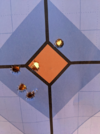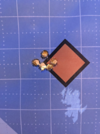Should I care about it? I've got nearly a metric ton of 125 grain sinterfire bullets in 308 (ok, 1500 of them).
For my 300 bolt, I've tried different powders (H110, AA1680, AA5744, 322) and can't get decent groups. I've tried 'high' velocities (~2100) and low (~1400) and when I shoot 5, I get a 2" group of a cluster of 3, and two flyers.
Since I've tried powders, I'm trying to see what other levers I can modify, and I'm wondering if I go for RPM. Maybe these things are really RPM sensitive? the only published loads I could find were for 308 Win. Which had speeds of ~2800-3000, with a barrel twist of 1:12.
So if it's RPM, the formula to calculate it is V(muzzle) * 720 / Bullet Twist in Inches. Looking at their established loads, the bullet RPM is 175,000. Doing the math, my 1:7 300BO rifle would need to be going at 1700 FPS.
I don't know if I'm just grasping at straws, because some of my test loads above had speeds near that velocity and I didn't get any amazing groups.
Does RPM matter?
For my 300 bolt, I've tried different powders (H110, AA1680, AA5744, 322) and can't get decent groups. I've tried 'high' velocities (~2100) and low (~1400) and when I shoot 5, I get a 2" group of a cluster of 3, and two flyers.
Since I've tried powders, I'm trying to see what other levers I can modify, and I'm wondering if I go for RPM. Maybe these things are really RPM sensitive? the only published loads I could find were for 308 Win. Which had speeds of ~2800-3000, with a barrel twist of 1:12.
So if it's RPM, the formula to calculate it is V(muzzle) * 720 / Bullet Twist in Inches. Looking at their established loads, the bullet RPM is 175,000. Doing the math, my 1:7 300BO rifle would need to be going at 1700 FPS.
I don't know if I'm just grasping at straws, because some of my test loads above had speeds near that velocity and I didn't get any amazing groups.
Does RPM matter?




